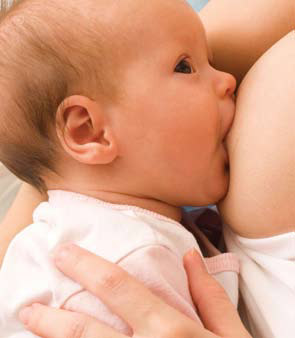Breastfeeding is a normal physiological human activity which has countless benefits for mother, child, family, society and the environment as a whole. This is especially so in the health of mother and child. Are you aware that breastfeeding is more than just nutrition for your baby? It is not only excellent for your child’s physical development but it also nurtures the mother and baby emotionally and strengthens the bonding between them.
Breastfeeding increases the emotional and psychological growth of mother and child. The act of suckling at the breast has an impact on both child and mother. Breastfeeding calms and provides analgesia to infants, as evidenced in reduced heart and metabolic rates and a reduced ability to perceive pain during suckling.
The Calming Effect
There are several reasons for this calming and analgesic effect.
-
Suckling at the breast stimulates the infant’s oropharyngeal tactileand mechanoreceptors and focuses attention on the mouth, reducing outside influences.
-
Suckling and intestinal absorption of fat from milk stimulates the release of the hormone cholecystokinin which activates the nerves that induces relaxation and pain relief.
-
The sweet flavour of milk stimulates the release of opioids in the midbrain of infants, which act on receptors that decrease the perception of pain.
-
Breastfeeding involves maternal skinto- skin contact which stabilizes blood glucose levels, body temperature and respiration rates and also reduces stress hormone release and blood pressure.
-
Finally, breastfeeding involves intimate social interaction between mother and child (bonding), which may result in the release of the anti-stress hormone oxytocin.
These mechanisms of relaxation and analgesia work synergistically and while research has thus far focused on newborns, the experience of mothers is that the calming, analgesic and relaxing effects of breastfeeding remain for as long as breastfeeding occur.
Emotional Connection
The mother-child bonding refers to the powerful emotional connection between a mother and her child. Breastfeeding increases the mother-child bonding due to the increased skin-to-skin contact that occurs as a mother holds her child close and looks at her child while nursing. A breastfeeding mother becomes sensitive to her child’s needs and learns to be more responsive to them.
Plasma oxytocin was found to be elevated following birth in women who held their infants skin-to-skin; notably the oxytocin peaked after expulsion of the placenta. After one or two suckling periods, the blood oxytocin became elevated with each breastfeeding. These increased levels may enhance the bonding of the mother to her infant as well as contract the uterine muscle to prevent bleeding. These findings help explain the observation made by nurses in France in the 19th century, when they noted that mothers who breastfed their babies for at least 8 days rarely gave up their infants.
When a mother breastfeeds her child, her sensory nerves in the nipples are stimulated by the touch of the baby’s lips which leads to the release of two very important hormones in the mother’s brain involved in breastfeeding, prolactin and oxytocin. Prolactin (the mothering hormone) apart from helping in the production of breastmilk helps the mother to relax and feel more affectionate towards her baby. Oxytocin (love hormone) is responsible for milk ejection and also for the euphoric feelings in the mother and lifting her mood.
Mothers need to be encouraged and supported immediately after the birth of the baby through early skin to skin contact and breastfeeding. This is important not only for the physical gains for both the mother and baby that breastfeeding brings but also for the emotional benefits that result from this relationship.
References
- Mother and Infant: Early Emotional Ties Marshall Klaus Pediatrics 1998;102;e1244 DOI: 10.1542/ peds.102.5.SE1.1244
- International Breastfeeding Journal2006, 1:5 doi:10.1186/1746-4358-1-5






Comments